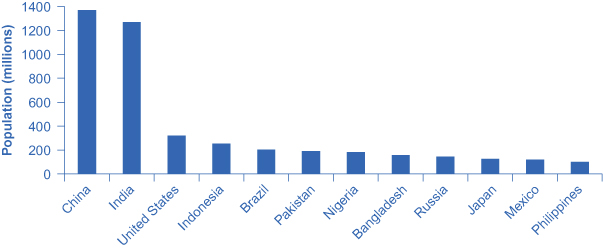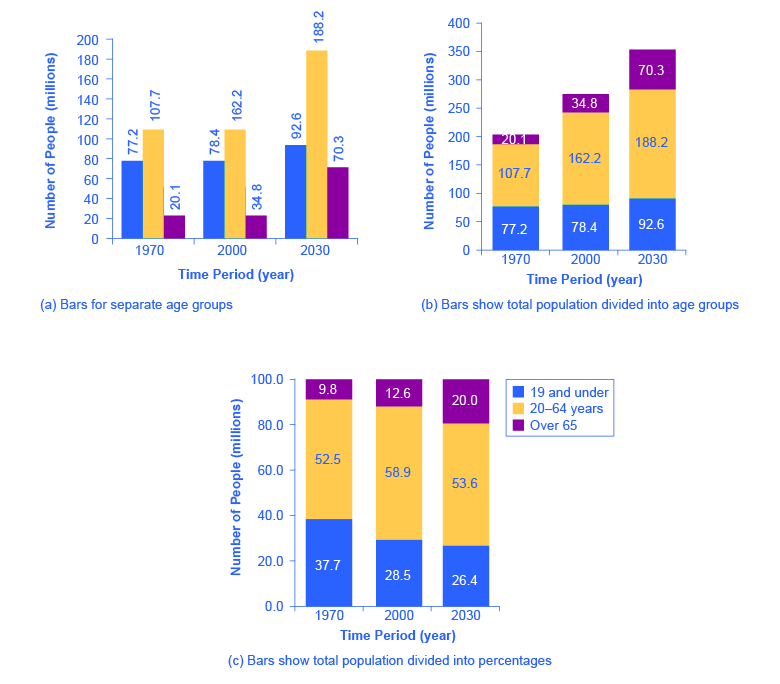| << Chapter < Page | Chapter >> Page > |
Bar Graphs
A bar graph uses the height of different bars to compare quantities. [link] lists the 12 most populous countries in the world. [link] provides this same data in a bar graph. The height of the bars corresponds to the population of each country. Although you may know that China and India are the most populous countries in the world, seeing how the bars on the graph tower over the other countries helps illustrate the magnitude of the difference between the sizes of national populations.

| Country | Population |
|---|---|
| China | 1,369 |
| India | 1,270 |
| United States | 321 |
| Indonesia | 255 |
| Brazil | 204 |
| Pakistan | 190 |
| Nigeria | 184 |
| Bangladesh | 158 |
| Russia | 146 |
| Japan | 127 |
| Mexico | 121 |
| Philippines | 101 |
Bar graphs can be subdivided in a way that reveals information similar to that we can get from pie charts. [link] offers three bar graphs based on the information from [link] about the U.S. age distribution in 1970, 2000, and 2030. [link] (a) shows three bars for each year, representing the total number of persons in each age bracket for each year. [link] (b) shows just one bar for each year, but the different age groups are now shaded inside the bar. In [link] (c), still based on the same data, the vertical axis measures percentages rather than the number of persons. In this case, all three bar graphs are the same height, representing 100% of the population, with each bar divided according to the percentage of population in each age group. It is sometimes easier for a reader to run his or her eyes across several bar graphs, comparing the shaded areas, rather than trying to compare several pie graphs.

[link] and [link] show how the bars can represent countries or years, and how the vertical axis can represent a numerical or a percentage value. Bar graphs can also compare size, quantity, rates, distances, and other quantitative categories.
Comparing Line Graphs with Pie Charts and Bar Graphs
Now that you are familiar with pie graphs, bar graphs, and line graphs, how do you know which graph to use for your data? Pie graphs are often better than line graphs at showing how an overall group is divided. However, if a pie graph has too many slices, it can become difficult to interpret.
Bar graphs are especially useful when comparing quantities. For example, if you are studying the populations of different countries, as in [link] , bar graphs can show the relationships between the population sizes of multiple countries. Not only can it show these relationships, but it can also show breakdowns of different groups within the population.

Notification Switch
Would you like to follow the 'Principles of economics' conversation and receive update notifications?